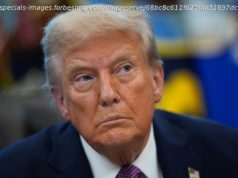President Donald Trump once again raised the idea of pulling the US out of Syria this week — this time privately during a meeting with King Abdullah II of Jordan at the White House, according to two diplomatic sources familiar with the sit-down.
However, senior military officials continued to say Trump had not given any sort of timeline and the US presence would be condition-based.
Now Trump appears intent on reviving the issue and will have an opportunity to discuss the topic with Putin when the two meet in Helsinki, Finland, next month. US officials have said Syria is on the agenda for the summit, but they have offered few specifics as to what the two leaders will talk about.
According to these sources, Trump’s plan would allow the Russians to help Syrian leader Bashar al-Assad take back an area along the Jordanian border where the US-led coalition and its military partners are experiencing increased opposition from „an unidentified hostile force“ in recent days despite a previous ceasefire.
„The United States continues to warn both the Russian government and the Assad regime of the serious repercussions of these violations and demands that Russia restrain pro-regime forces from further actions within the southwest de-escalation zone,“ a statement from the State Department said last week.
By allowing the Russians to help Assad take back this region, Trump believes he can expedite the removal of US forces if certain conditions are met.
In exchange, Trump is looking to the Russians for assurances that the Syrian regime will not massacre the US-backed rebels in the region — allowing them to cease hostilities and ship out of the area.
He would also expect the Russians to establish an exclusion zone to prevent fighting in southwest Syria and block Iranian-backed forces from the region, the sources said, adding that kicking Iran out of Syria is a key part of Trump’s plan for US withdrawal.
But even if Putin were to agree to Trump’s proposal, there are major concerns about whether Russia could accomplish what Trump is looking to achieve, the sources said.
There are also serious questions about how to address the refugee situation and allowing Assad to stay in power, they added.
In April, Trump announced that the US, in coordination with France and the United Kingdom, had launched strikes on Syria following a week of threats of retaliation for an alleged chemical weapons attack on civilians by the Assad regime.
But despite his intention to send a robust message to Assad for using chemical weapons, Trump has indicated he still wants to pull US forces from the country sooner rather than later, as US military leaders have said their mission there is limited to defeating ISIS.
At the time, one US defense official directly familiar with the ISIS campaign said it was unclear what the President meant by the comments, adding that the military’s current assessment is that now is not the time to consider withdrawing, citing numerous challenges in Syria.
The official also noted that the US still needed to decide on a policy with regard to Assad’s future and Russia’s continued military presence in the county as additional complicating factors.
The President’s desire to exit Syria as soon as possible has raised concerns among US allies in the region, particularly the rebel Syrian Democratic Forces, and could embolden the forces of the Syrian regime, Iran and Turkey, all of which have mostly resisted attacking US allies in Syria due to concerns about US retaliation.






